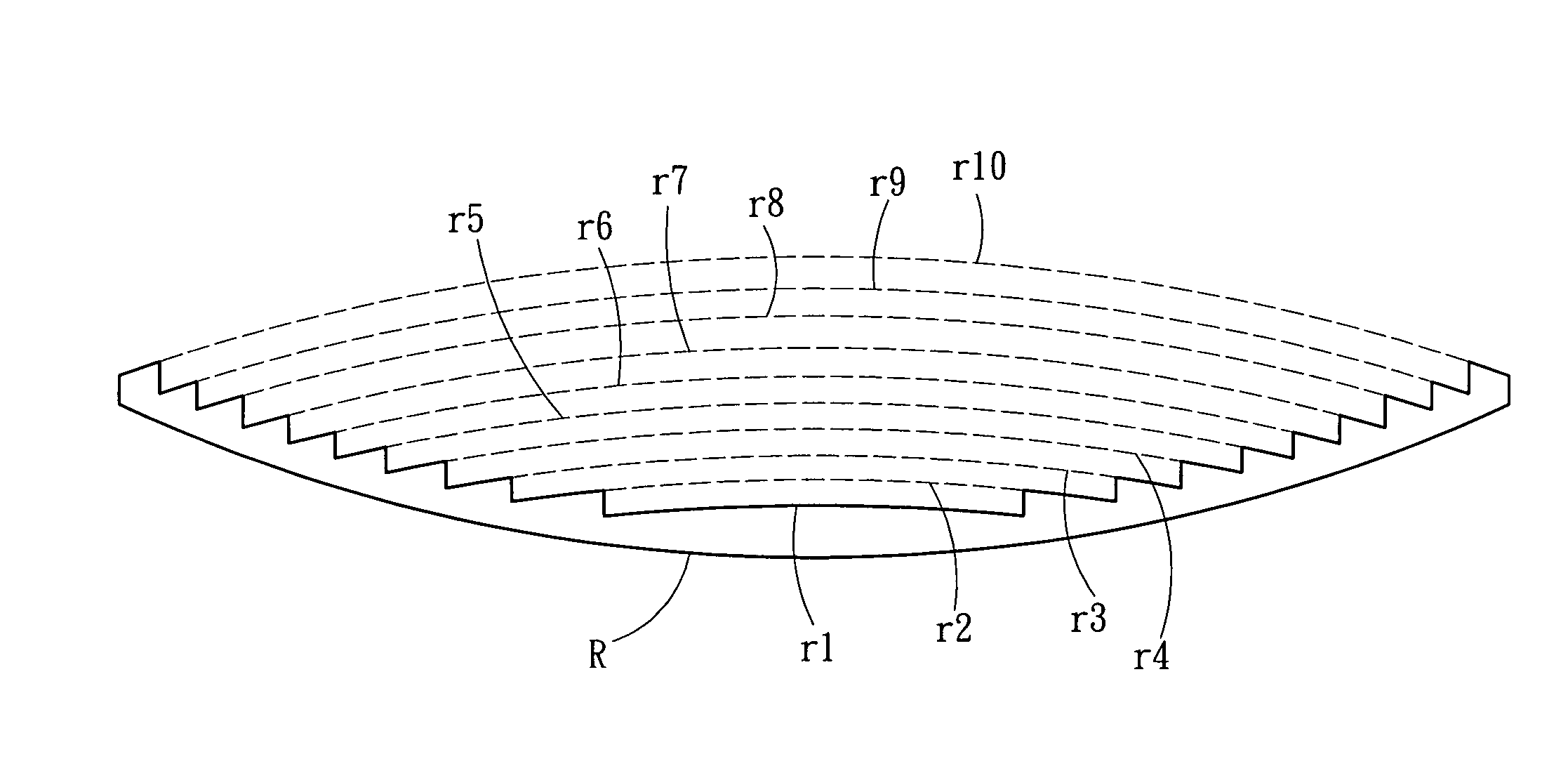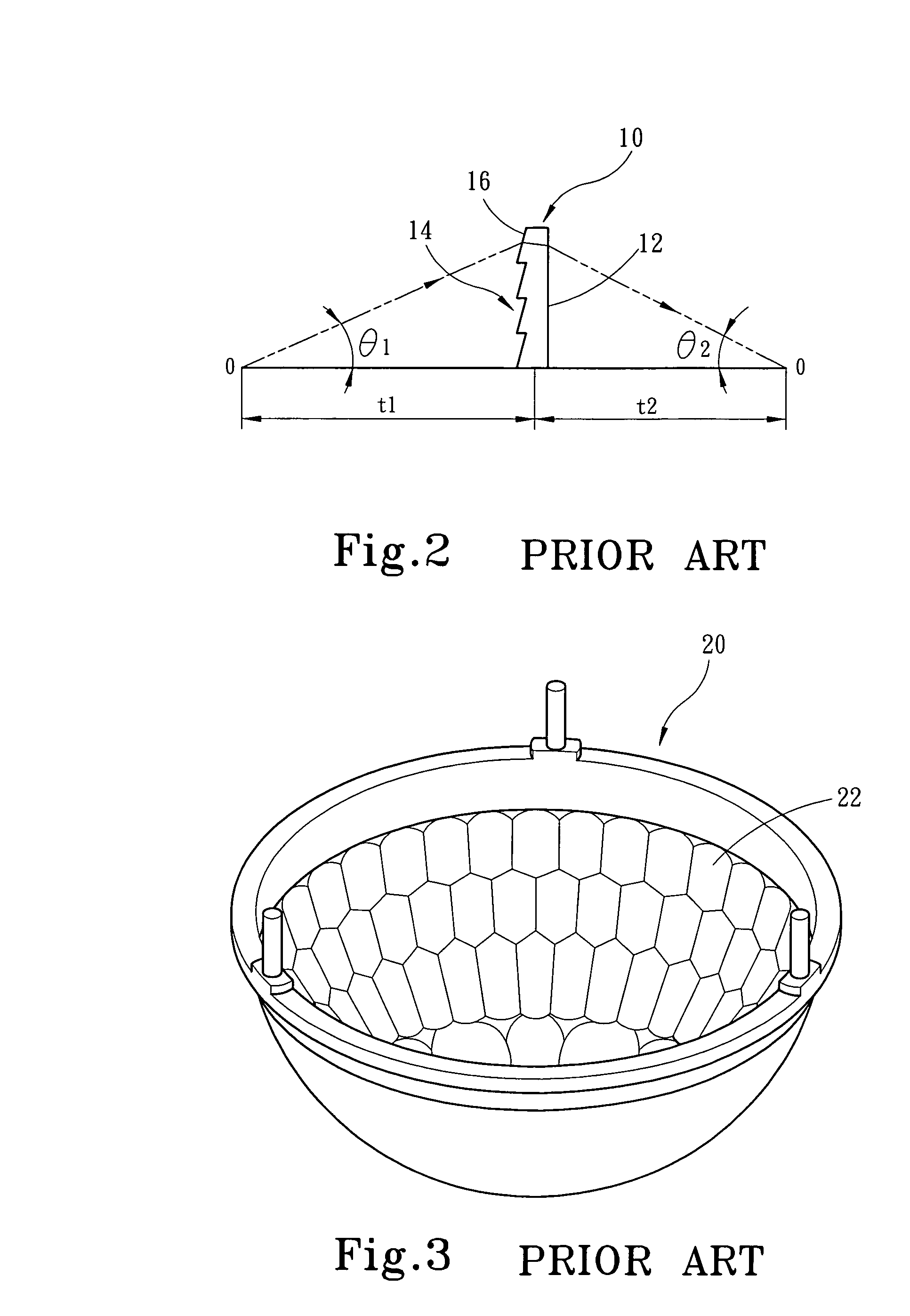Thin-type spherical lens
a spherical lens, thin-type technology, applied in the field of spherical lenses, can solve the problems of insufficient focusing accuracy, inducing comatic aberration and energy loss, and increasing so as to increase the lens aperture and increase the thickness of the lens, the focusing effect can still be maintained superior, and the effect of increasing the apertur
- Summary
- Abstract
- Description
- Claims
- Application Information
AI Technical Summary
Benefits of technology
Problems solved by technology
Method used
Image
Examples
Embodiment Construction
[0017]Firstly, the process, which deduces the thin-type spherical lens of the present invention from a conventional spherical lens, will be described in detail herein. Refer to FIG. 4 showing a diagram of a general spherical lens 30. To increase the transmittance of light energy, such as infrared ray, increasing the aperture of the lens is an obvious and direct method; however, the thickness of the lens cannot exceed but should be maintained within a given range. As shown in FIG. 5, based on the above principle, a spherical lens 40, which has an aperture of φ1, an external curvature radius of R, an internal curvature radius of r1, a central thickness of a, an edge thickness of b, and a focal length of f (not shown in the drawing), is firstly simulated. A spherical lens 50 with an aperture of φ2 is also simulated, wherein φ2>φ1, and the external curvature radius thereof is maintained R, and the edge thickness thereof is maintained b, and the central thickness is increased to a+c; the...
PUM
 Login to View More
Login to View More Abstract
Description
Claims
Application Information
 Login to View More
Login to View More - R&D
- Intellectual Property
- Life Sciences
- Materials
- Tech Scout
- Unparalleled Data Quality
- Higher Quality Content
- 60% Fewer Hallucinations
Browse by: Latest US Patents, China's latest patents, Technical Efficacy Thesaurus, Application Domain, Technology Topic, Popular Technical Reports.
© 2025 PatSnap. All rights reserved.Legal|Privacy policy|Modern Slavery Act Transparency Statement|Sitemap|About US| Contact US: help@patsnap.com



